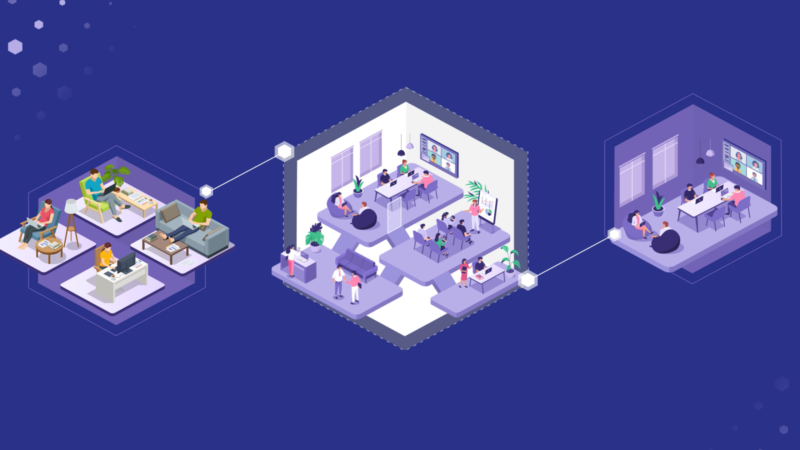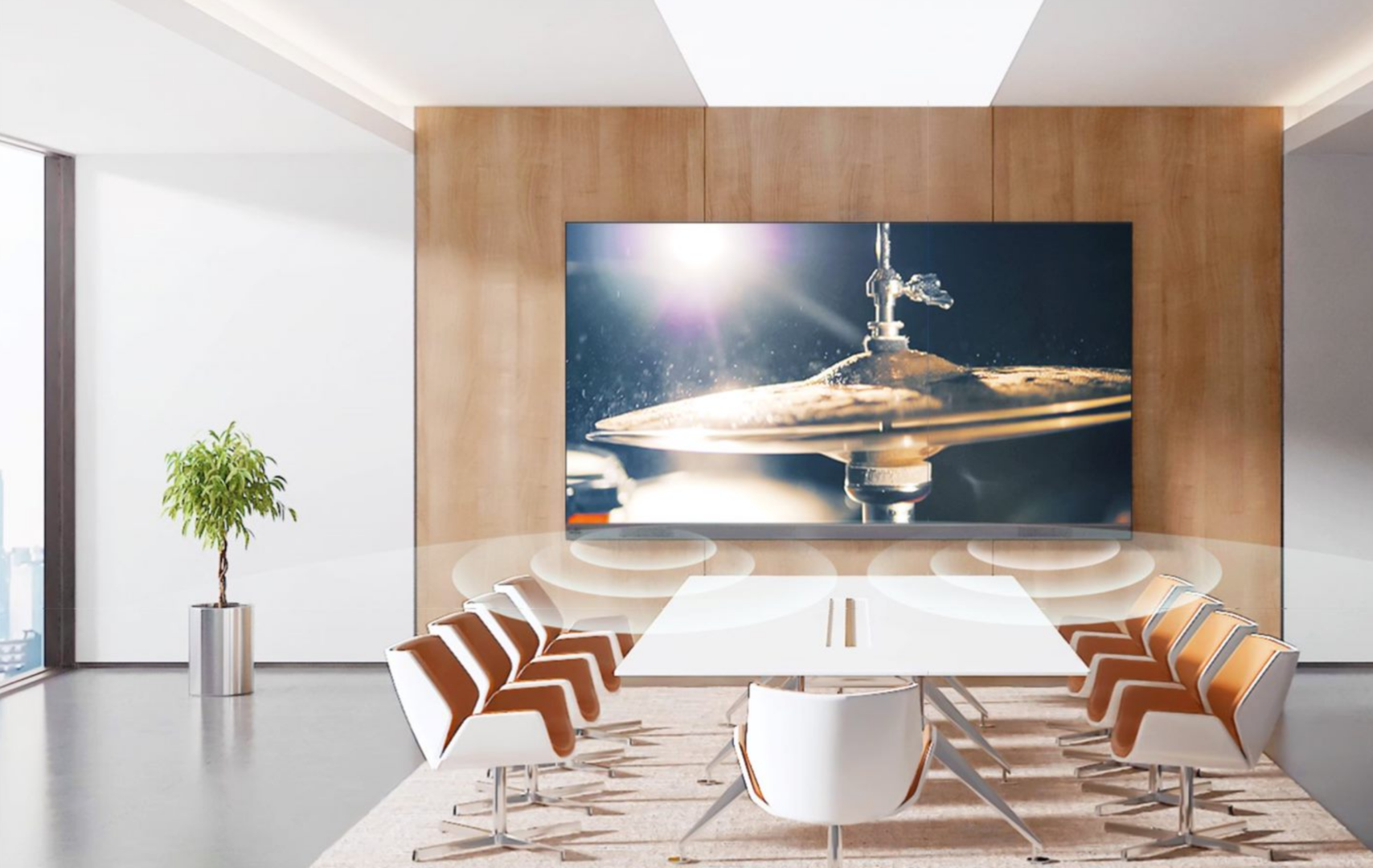
IT and Facilities Managers – the New Heroes of Hybrid?
The New Conundrum
The way organisations work is changing – again.

Early in the pandemic, it was largely about survival mode. The focus was ensuring equipment, software and security was set up to allow employees to be productive remote workers. Now, organisations are turning their attention to the challenges of hybrid working and looking at how they can use it to create a real advantage.
The new conundrum revolves around balance. How to enhance the quality of the working experience, both for those in the office and those working remotely. How to enable employees to work together, communicate and collaborate effectively – wherever they are.
Organisations are looking for answers. Smart technology presents opportunities for IT and facilities managers to deliver the goods and shine
The Time to Step Up is Now
Hybrid working is here and looks like it is going to stay. Especially with Millennials and Gen Z employees appearing to embrace it.
According to an international survey from Talents in Motion, PwC and Con il Sud Foundation, young talent (74 per cent under 35 years of age) are interested in smart working – and many see hybrid as the way of the future. A McKinsey & Company study revealed almost half of 18-to-29-year-olds favour hybrid work. And Gartner’s 2020 Reimagine HR Employee Survey found two-thirds of Gen Z employees expect to be allowed to work remotely.
Organisations are having to work out what that means for office space, the remote and in-office employee experience, and people’s wellbeing. It presents some challenging questions. What office space do we need? How can we make our office hybrid ready? What meeting rooms will be needed? What technology is required? How do we scale that technology?
That doesn’t mean everyone has to wait for directors to take the lead. The issues around hybrid working present IT and facilities managers with opportunities to be pro-active. To become key players in successful transformation.
It requires a strong understanding of the challenges and up-to-date knowledge about the technology available to provide solutions.
Know Your Office Space and Meeting Rooms
IT and facilities managers can better understand the challenges by knowing their building like a teacher knows the pupils in their class.
Assess the plus and minus points of each room. Take account of health and wellbeing considerations such as social distancing. Are there the right size and number of rooms? In larger rooms, is the screen big enough for people to see everyone as more than a speck? Does the ambient lighting reduce the power of the visuals? Can everyone be heard clearly, in room and remote?
Use data and user feedback to identify issues or potential problems.
Avoid Problems by Letting Smart AV Lead the Way
There’s no getting around it. On the tech side, a great hybrid meeting experience requires both good audio and visual.
Poor sound or low video quality means distraction, frustration and poor communications. Cluttering of cables can make things messy – and create a potential health and safety issue. If only some participants can use the whiteboard or other collaborative tools, it means others are disenfranchised.
That’s going to leave employees and guest participants underwhelmed. Typically, it may result in IT callouts and complaints. That’s not great for reputation.
Smart technology, particularly if it offers all-in-one functionality, can help organisations get it right. It allows for more seamless, effective and productive meetings. Cutting-edge LED walls and video walls, for example, can create a memorable wow factor.
Make Collaboration Easy with Intelligent Tech
Creating that great experience and wow factor for employees and customers is not a futuristic vision. The tech is here now. The smart play is to get to know what’s out there and how it improves collaboration and meeting participation.

For example, MAXHUB’s Raptor Series of integrated LED walls makes it simple to create an immersive experience, whether employees are working remotely or in the office. It maximises space and declutters the meeting room – avoiding the jumble and hassle of multiple cables, devices and remote controls.
The all-in-one, edge to edge LED wall design provides a single continuous screen to match any room. Built-in video processing in this video wall means crystal clear image quality. Built-in speakers deliver studio grade audio clarity. Onboard functionality makes content sharing simple and effortless, so participants and presenters can interact fully and more naturally with each other.
Smart tech allows people to work smarter in a hybrid world.
Serving Better by Taking the Lead
When IT and facilities managers understand the organisational and C-suite challenges in a more holistic way, they are better able to find solutions.
A good place to start is to ask more questions, better questions, of departments and teams. The extra knowledge helps managers when finding out what intelligent tech can do, both for today and tomorrow. It allows them to inform and influence the decision-makers.
Organisations who get this right will enjoy the best outcomes around the new way of working. Yes, there are challenges ahead. But they present an opportunity for IT and Facilities managers to be true heroes of hybrid.
Sources:
Talents in Motion, PwC and Con il Sud Foundation Survey: https://www.talentsinmotion.org/it/risorse/think-tank-forum/talents-in-motion-live-1.html
McKinsey & Company Survey (reported by BBC):
https://www.bbc.com/worklife/article/20210729-why-younger-workers-want-hybrid-work-most
Both the above cited in a Forbes article on ‘Hybrid Working Models: Why employees’ well-being must be a priority’: https://www.forbes.com/sites/forbeshumanresourcescouncil/2021/12/06/hybrid-working-models-why-employees-well-being-must-remain-a-priority/?sh=341ac34c315b